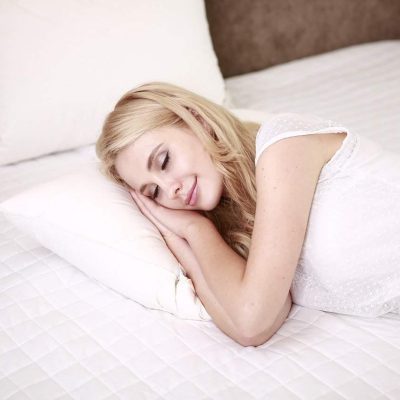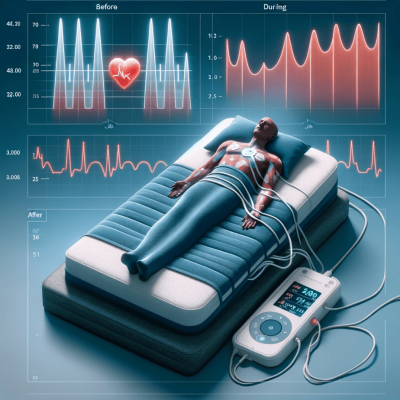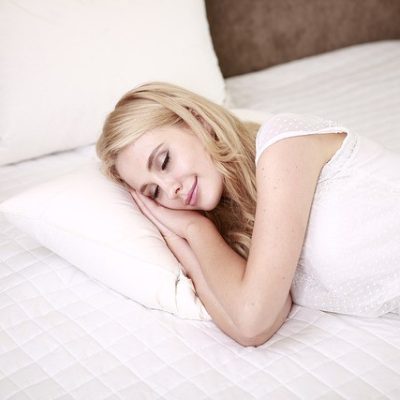Have you ever woken up groggy and unrested even after a 6-hours of sleep? Have you ever given a thought to why you feel a choking sensation in the middle of the night? Or your spouse has reported that your snoring hampers their sleep. These symptoms may hint that your sleep apnea has worsened despite the treatment. One of the probable causes can be the way you are sleeping.
Table of Contents
ToggleWhat is sleep apnea?
Apnea is a sleep and respiratory condition which leads to respiratory pauses. Sleep apnea needs greater awareness among the people because its symptoms can be easily ignored or mixed with other conditions. Often symptoms of two different types of apnea can overlap. It makes it difficult for the practitioner to provide medical treatment.
Common symptoms include loud snoring, a choking sensation or gasping for air, insomnia, headaches and tiredness in the morning and reports of breathing pauses from other people.
What are the types of sleep apnea?
Depending on the cause of these pauses, sleep apnea can be divided into three types.
Obstructive sleep apnea:
It is the most common form of apnea that occurs when the throat muscles relax untimely causing breathing pauses.
Central sleep apnea:
This condition is more serious and happens when the brain forgets to sen signal for breathing during the night.
Complex sleep apnea syndrome:
This happens when the symptoms of two apnea manifest at the same time. Both obstructive sleep apnea and central sleep apnea occur together.
What are the risk factors of sleep apnea?
Age:
Sleep apnea becomes more common after an and is associated with a certain type of lifestyle. Apnea is more common among the older generations. Men are more likely to develop apnea earlier than females. But, as their age increases, both the sexes have equal chances.
Habits:
Consuming alcohol relaxes the muscles and dulls the brain, this increases the chances of having breathing pauses. Similarly, smoking leads to the inflammation of muscles lining the airway. The passage becomes narrower and disrupting normal breathing pattern. Also, unhealthy diets and a dentary lifestyle also promote sleep apnea.
Family genetics:
Apnea runs in the family, but an individual can avoid it if they maintain a healthy lifestyle and are not obese or overweight.
Race and ethnicity:
Researchers suggest that apnea is more common among people hailing from Hispanic, African or from Native America.
Why does sleeping position matter?
We all tend to have a particular sleeping position that we are most comfortable in. Lying in bed with the freedom to extend and contort your limbs as you see fit, is truly a comfort we all cherish. The preference ranges from lying on your stomach, curling oneself like a fetus or in a supine position. It is a given that you have never put much thought into how body organs are arranged when you doze off.
Believe it or not, but our sleeping style has a significant role to play in sleep apnea. Depending on whether we are lying on our stomach or our back can either relive or exacerbate apnea condition.
Sleeping tendencies and preferences
Even though we do not put much thought into our sleeping position, other than comfort. But there are some more factors that do influence this choice. This includes demographic factors like age and gender. Research suggests that preferences for sleeping positions change as we mature. older adult bodies are less flexible and stiff. The joints are prone to pain as a result, adults tend to sleep in more-or-less in the supine or prone position. Women tend to sleep sideways due to their menstrual health and are instructed to do so during pregnancy.
What are the mechanics behind sleeping positions?
When sleeping the body is in a horizontal position, and the mechanics are quite different from normal breathing conditions. When in an upright position, all the upper airway is straight, unobstructed and also aided by gravity. When you put your head down on the pillow, gravity works against you and the muscles linking your airways have to work to force the air in a certain direction. The muscles in the upper airway are likely to relax in case of apnea and hinder the flow of air, causing a respiratory pause.
What is the best sleeping position for sleep apnea?
Among all the variables in a person’s sleeping habits, your sleeping position perhaps remains the most consistent. Other nightly routines like bedtime, or waking time and other habits can change on a daily basis.
The sleeping position you find the most comfortable, might not be the best for your health. It might be worsening your apnea, be the cause for your aches all over the body and stiff joints.
While sleeping positions vary widely, depending on the person’s flexibility but they roughly fall into five categories. People have modified these positions according to their preferences. We discuss five of these positions and which one of them is best for obstructive sleep apnea.
Sleeping position #1: Fetal

Studies reveal that 4 out of 10 people prefer the fetal position for sleeping. Women show a particular liking for this position and are twice as likely than men to sleep in a fetal position.
In this sleep position, one is usually lying on the side, with their folded upwards and perhaps with hands upon the legs. This position has its benefits and is suitable for the spine because it remains in its original way. However, among less flexible people, it can cause neck and back aches. Women are often recommended this sleep position when pregnant.
Both humans and animals showcase a preference for this style of sleeping. But is it equally suitable for people with breathing issues?
The diaphragm and the lungs are compromised because of crooked back in this position. For better breathing experience, it is recommended to keep your back in a relaxed position. Hence this position is not ideal for someone with sleep apnea.
Sleeping position #2: Log
15% of the dozers like to catch their night’s sleep this way. If you sleep on your side with your legs and arms stretched down that you sleep like a log. Well, this is perhaps as suitable as a sleeping position can be for sleep apnea. In this scenario, your back is relaxed, the lungs and diaphragms are not compromised. So this is an ideal way of sleeping.
One can also place a pillow or a folded blanket, towel between the two legs to ease the pressure at the hips. This position appears quite suitable for other bodily functions as well. This proves that “sleeping like a log” might be something to put on your to-do list.
Sleeping position #3: Freefall

The name paints a clear picture of this sleep orientation. With your head sideways, lying on your stomach or sideways and hands tucked under the pillow. It definitely is a cosy way to doze off while snuggling in the bed.
The sleeping style creates a forward movement for the tongue allowing it to prevent any blockage. However, if you are sleeping in this fashion, then you cannot fit a CPAP mask on your face. However, you can fit another pillow to lift your forehead, so the mask does not shift its place and spills the liquid. But we cannot imagine that to be comfortable enough for quality sleep. So no, this position is also not fit for people with sleep apnea.
Sleeping position #4: Soldier/ Stargazer
Stargazer is another very common way of falling asleep. You are a stargazer if you lie on your back with your limbs positioned comfortably.
With your head facing the ceiling, the gravity is pulling the soft muscles of the tongue downwards. This narrow the airway, decreasing the space through which air can pass through. Thus, promoting the chances of respiratory pauses and worsening obstructive sleep apnea.
This sleeping style is also known to worsen already present snoring tendencies and disrupting your quality sleep. So, the stargazer is also not an ideal way to sleep for someone with sleep apnea.
Sleeping position #5: Starfish
Starfish is another modification of the Soldier or Stargazer sleep position. Here, you sleep on your back, with your head facing upwards and arms stretched to their limit. A starfish sleeper often needs the whole bed for themselves at night.
Similarly, like a stargazer, starfish sleep position, the muscles of the tongue are pulled downwards by the force of gravity narrowing the airway. This is not a desirable condition for a person with sleep apnea. So, we cannot recommend this style of sleeping for you.
Summing it up
Like you see above, we pointed out five sleeping patterns and there exist several others. We have no control over the way people sleep and people can make their own sleeping styles for quality sleep. But we are here to give you tips to avoid any complications to your obstructive sleep apnea and worsen it further.
To sum it up, it is clear that sleeping on your back and on your stomach is not acceptable. This either creates pressure on the lungs and diaphragm, preventing the smooth flow of air. Or narrows the airway by pulling down the tongue and an increased tendency of snoring.
Sleeping on the side is the best for apnea patients. But, you may have to adjust to it, and ensure that your CPAP mask does not leak in any way. Also, you have to pick a side, the left side is considered to be the healthier side. It promotes blood flow and offers little to no resistance for breathing. Side sleepings also reduce acid reflux, snoring, back and neck pain.
So, sleep-away our readers, we wish you a cosy and warm night’s sleep and may you wake up more refreshed than ever.








